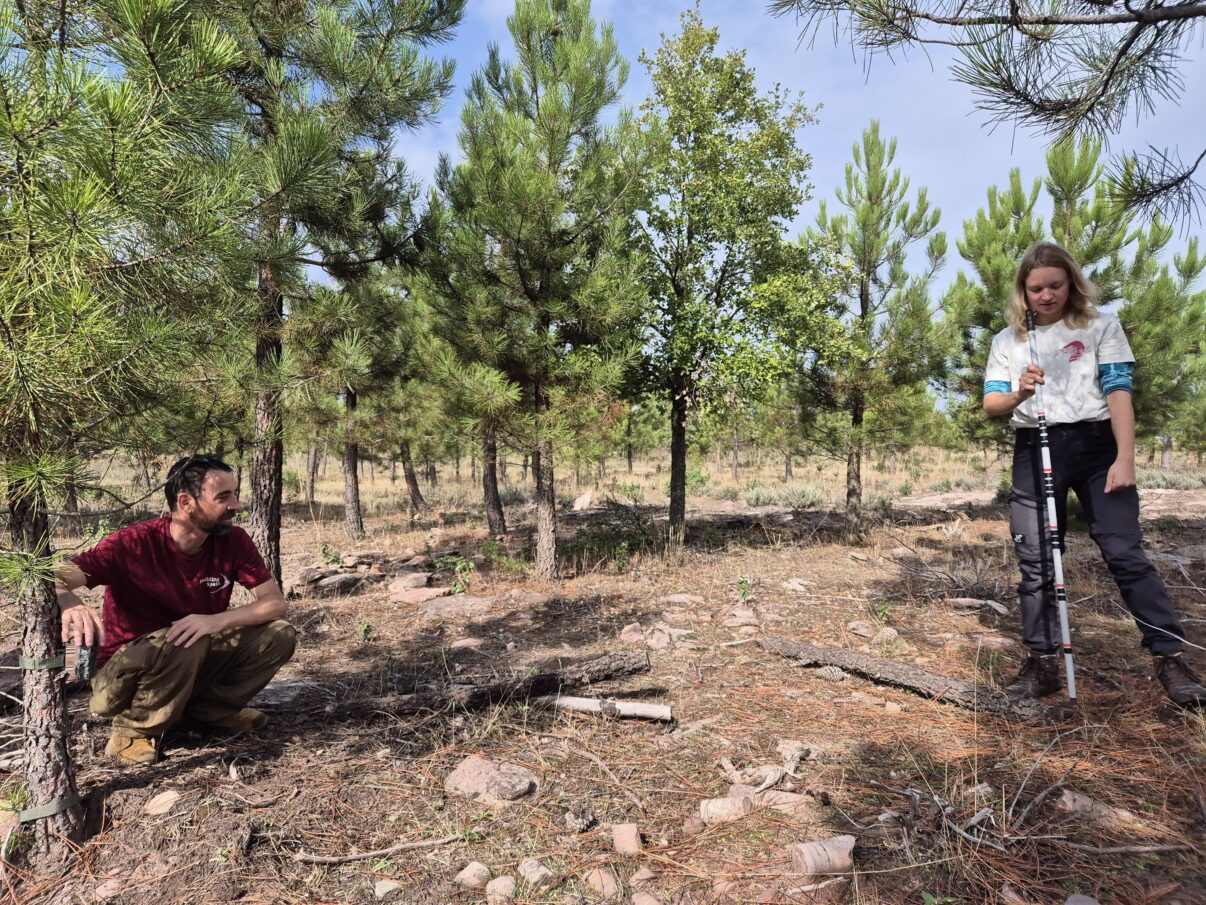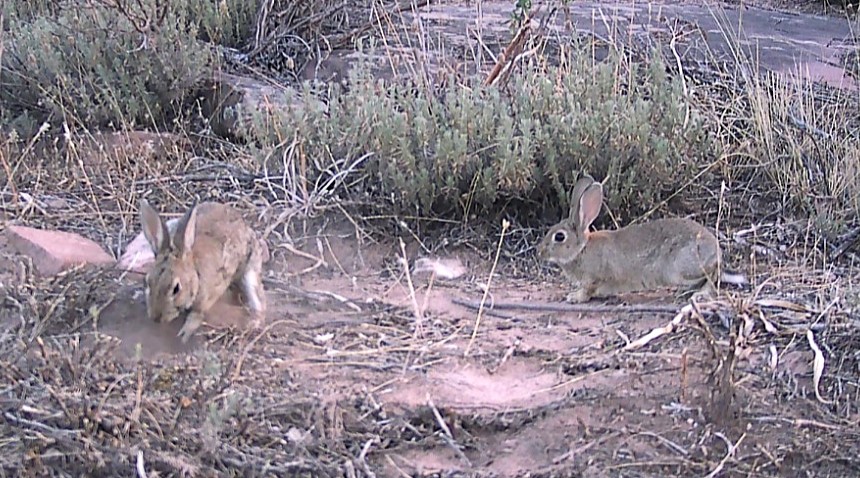Rewilding Spain has deployed a network of camera traps and transects in the Dehesa de Solanillos (Mazarete, Guadalajara) natural grazing area to analyse the status of this species, which is key prey for many Iberian carnivores and also a valuable ecosystem engineer.

Rewilding Spain is carrying out rabbit transects and camera trap sampling of the wildlife that inhabits the Dehesa de Solanillos mountain (Mazarete, Guadalajara), one of the last places in the landscape where the European wild rabbit (Oryctolagus cuniculus) still survives. The triple objective is to know the distribution and abundance of rabbits, the populations of competitor species, such as hare and deer, and the densities of all the wild mammals existing in the area.
This monitoring on the rabbit is aligned in methodology and objectives with the protocol of the Life project for the Monitoring of Wild Rabbit Populations at a detailed scale, which is used to know the abundance of this herbivore in low-density areas. In the Dehesa de Solanillos site, the fox (Vulpes vulpes), the wildcat (Felis silvestris), the marten (Martes foina) and the wild boar (Sus scrofa) are mammals that have the rabbit among their prey.
 On the other hand, a network of 60 camera traps has been deployed on the ground, following the European consortium Enetwild and the European Observatory of Wildlife protocols. These camera traps cover a territory of 2,800 hectares and last July started collecting very valuable data on the fauna of the area that will be analysed at the end of this year.
On the other hand, a network of 60 camera traps has been deployed on the ground, following the European consortium Enetwild and the European Observatory of Wildlife protocols. These camera traps cover a territory of 2,800 hectares and last July started collecting very valuable data on the fauna of the area that will be analysed at the end of this year.
Monitoring actions are essential to know both the current status of animal populations in the landscape and their evolution over time, by establishing a baseline from which the impact of the rewilding actions with large herbivores can be measured. As well, monitoring facilitates decision-making processes. The measurements will be repeated at the same points over the next years, and this will allow us to know the changes that occur in every species and in the landscape itself.
More than 20 species already tracked
The data collected so far in the Dehesa de Solanillos show that this mountain is the habitat of more than twenty species of mammals and birds. Among them we can find some that are abundant throughout the Iberian Highlands, such as the deer (Cervus elaphus), the roe deer (Capreolus capreolus) or the badger (Meles meles), but also others such as the elusive wildcat a species whose presence is in decline in the center and south of the Iberian Peninsula.
Natural grazing with horses and tauros
Dehesa de Solanillos is one of the areas in which Rewilding Spain is developing natural grazing actions, in this case with Serrano horses (a native rustic breed) and tauros, a task that aims to contribute to a healthier forest restoration in this region, which was devastated by a large wildfire in 2005. With their feeding and trampling, large herbivores make the forest more resilient against potential new fires and strengthen biodiversity.
The monitoring and data analysis work is run by the Rewilding area of Rewilding Spain, led by Diego Rodríguez, with the support of biology and nature conservation students. “With this study we are seeking three main objectives: getting to know how many rabbits we have and where they survive; the density of their predators and competitors, so we understand where to carry out potential actions, and to have an initial database of the wildlife of Solanillos area, so we can compare with future data as the horses and the Taurus do their natural grazing work on the landscape,” explains Diego.
The Rewilding Manager concludes: “All this information will help us to design the rabbit recovery plan with better criteria, with actions such as the installation of bivouacs (which significantly reduce predation) and water points. The rabbit is not only the key prey of numerous Iberian carnivores, but also an ecosystem engineer that creates the conditions for many other species to find refuge in the harsh conditions of the Mediterranean forest. Therefore, recovering the rabbit is key to restoring our ecosystems.”
